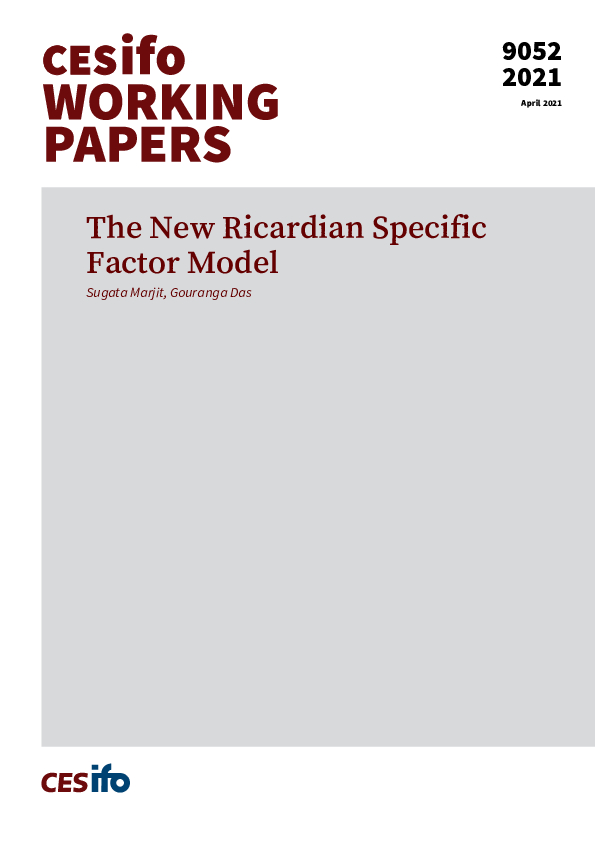The New Ricardian Specific Factor Model
CESifo, Munich, 2021
CESifo Working Paper No. 9052

This paper explores the implications on trade and wage inequality of introducing financial capital or credit in the standard Ricardian model of production, where a given amount of start-up credit is used to employ sector specific skilled and unskilled workers following the Wage Fund approach of classical economists. Thus, we have the Specific Factor (SF) structure of Jones (1971) in a new Ricardian model (NRM) with credit and two types of labour. With an entirely different mechanism from the conventional Neo-Classical structure, distributional consequences of changes in endowments, commodity prices, and financial capital are established. Comparisons with Jones (1971) show that unlike SF model, credit expansion affects wages and nominal costs without affecting trade patterns, while rise in the relative price of the skill-intensive good causes skilled wage to hike less than proportionately, and may cause return to capital to inflate more than the wages We extend the basic model to analyse immigration, unemployment and imperfect credit market.
Monetary Policy and International Finance
Trade Policy